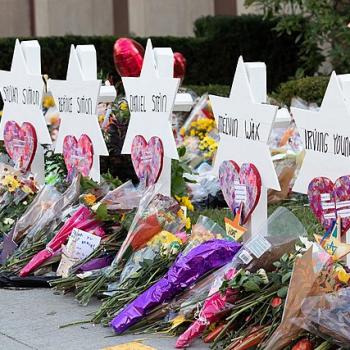 |
|
Not a safe haven anymore
|
Switzerland. The very name evokes images of almost heavenly beauty – idyllic enclaves of pristinely pure lakes surrounded by magnificent lush snow-peaked mountains, dotted with honeymoon-enticing chalets nestled within forests of pine furs towering to the skies. Beautiful, scenic Switzerland – it deserves its status as being one of the most popular tourist destinations in the world. It has one of the highest per capita incomes in the world, and its cities are regularly ranked as being amongst the highest in terms of quality of life, in the entire world.
Of course, Switzerland does have a darker side. It has also established its reputation as being one of the most notorious financial centers for money laundering, especially for international drug dealers and mafia lords. Its unique secrecy rules in the banking industry allow even nonresidents to conduct business through offshore entities and intermediaries, providing an almost complete blanket of anonymity.
Apart from the notoriety of Swiss banks, the Swiss do have their own unique set of problems as well. A particularly troubling issue is the preponderance of alcoholics amongst Swiss youth. A survey conducted by a government agency revealed that almost 50 per cent of 13-year-olds in Switzerland had consumed alcohol in the month before the representative survey was made, and another survey revealed that 14 per cent of 13-year-olds get drunk at least once a month.
Switzerland also has one of the highest suicide rates per capita in the Western world (especially amongst young teenagers and the elderly), and a very serious drug problem. Not only is it a direct transit country for the export of cocaine, heroin, and other synthetics, it also has a healthy domestic cannabis cultivation, and one of the highest rates of drug offences in the world (a staggering 50% of the population – contrast this with America, which has an average almost ten times less than that of Switzerland).
It is, therefore, quite surprising that of all things bothering the Swiss, the last thing one would have imagined is the building of mosque minarets. Yet, this past weekend, a referendum was passed that expressly forbids the building of minarets. The referendum passed with a 57 % majority vote, and 22 out of 26 cantons (Swiss provinces) voted in favor of it. Over 55 % of the population voted in this referendum (to put this figure in perspective, that’s around 4.3 million voters).
One would expect, with such a large number of people voting, that the skylines of Zurich were perhaps being threatened with ominous minarets poking up at every street corner. Maybe the beauty of the chalets nestled in the Swiss alps was being marred with the presence of mosques suddenly appearing on the back of Swiss postcards. After all, for 4.3 million people to be motivated for an election, surely some huge quantity of minarets would have to exist.
It is, therefore, almost surreal to discover that in the entire country of Switzerland, there are a grand total of four minarets. Each of these minarets is found in a separate province altogether. Thus, 99.9 % of cities and towns across the country don’t even have a single minaret, and only four cities can boast one minaret each. That works out to about one minaret per four thousand square miles of Swiss soil (Muslims themselves are less than 5 % of the entire population in Switzerland).
So then, why all the fuss? The minaret-furor all began in 2005, when a small mosque in the almost unheard of municipality of Wangen bei Olten wished to construct a 6-meter minaret as part of the mosque structure. Local residents, quite clearly motivated by racist views, objected. Initially, the city council agreed, but over the course of the next few years, the mosque fought back through the legal system, eventually taking this issue up to the Federal Supreme Court of Switzerland, who sided with the mosque authorities and stated that building a minaret was within their legal rights. Therefore, in July of this year (2009), the mosque was finally built with the minaret in place.
However, in Switzerland, a ruling from the Supreme Court can still be challenged. Switzerland has a highly unusual form of democracy. It is characterized by an excessive degree of federalism and a gratuitous reliance on people referendums. The citizens themselves may directly appeal to revoke a federal or Supreme court law, and they may also directly petition the government to institute a law of their own. The Swiss system of direct democracy gives every member of the electorate the chance to wield influence. The federal constitutional initiative allows citizens to put a constitutional amendment to a national vote, provided that they can get 100,000 voters to sign the proposed amendment within eighteen months of its initial advertising.
Therefore, because of this minaret controversy, a number of right-wing conservative parties lobbied the people directly in order to achieve the hundred thousand signatories needed in order to institute this national referendum. One of the main advertising posters used to provoke the masses featured a silhouette of an ominous-looking woman in full niqab against a backdrop of seven black minarets shaped as missiles rising from a colorful Swiss-flag.
Unlike the ban on niqabs and hijabs in neighboring France, which at least attempts to portray the ban as being one on all religious symbols (hence Sikh turbans and Jewish yarmulkes are also technically included), the Swiss referendum was quite blatant in its selective targeting of Muslim mosques. The proposition, which will now be added into Article 72 (Section 3) of the Swiss Federal Constitution, reads: “The building of minarets is prohibited.” Notice, not ‘The building of overt religious public icons…’ or even ‘The building of symbols of non-Christian public houses of worship…,’ but rather, quite bluntly, ‘ The building of minarets…’
What makes this bad situation even more worrisome is the fact that such an overtly xenophobic and racist attitude finds so much support in an otherwise neutral country. If this vote had occurred in, say, Denmark, one would not be surprised, after the Danish cartoon controversies and the reaction in the Muslim world, to find a majority of Danes voting for such a referendum. But, of all places, Switzerland? Muslims worriedly and rightly ask: If these negative attitudes are so popular in Switzerland, what does that augur for other European countries?
Already, right-wing parties across Europe are salivating at the news of this ‘victory’. The leader of the radical-right Austrian Freedom Party, Heinz-Christian Strache, hailed the passage of the Swiss referendum and expressed his delight at the result, and his eagerness to emulate the Swiss example in his own country. Marine Le Pen, vice-president of France’s National Front, congratulated the Swiss for having demonstrated their attachment to their “national identity, their countryside and their culture”, despite calls from the “elites” not to vote in favor of the ban. In Italy, Roberto Calderoli, Berlusconi’s Reform Minister, announced that a clear sign had come from Switzerland: “Yes to church towers, no to minarets” and said that Switzerland should be a model for Italy in this respect.
Perhaps this fear is exacerbated by Europe’s extremely low birth rate (in 2005, Switzerland ranked a miserable 177 out of 195 countries in the world, with an average of 9.6 births per 1000 people), coupled in recent decades with a rise of Muslim immigrants. Perhaps there is also an element of simple, old-fashioned racism against non-whites (however, in Switzerland, most Muslims immigrants are mainly from the former Yugoslavia and Turkey, and are thus white in skin color as well).
But these facts alone cannot explain such xenophobia. Ten years ago, it would have been impossible to even imagine such a referendum being given a shred of respectability, much less actually pass in a nation-wide vote. Rather, one must confront the stark reality that such extreme xenophobia, manifested in the alarmingly fast rise in popularity of all right-wing parties across Europe (and even America), occurs in the backdrop of 9/11 and the ‘War on Terror’.
Increasingly, Islam and Muslims are in the daily news, typically associated with acts of violence and terrorism. The average American and European, who has little interaction with Islam and Muslims, is feeling increasingly troubled by the presence of – as they perceive it – highly-volatile potential fifth-column ‘Islamists’ within their midst. In order to counteract whatever miniscule influence or presence these Muslims have (in most Western countries, Muslims do not even number 5 % of the population), Western nations are ever-eager to demolish the very civil liberties and freedoms that they themselves struggled for centuries to establish. As one right-wing pundit wrote in recent book, these liberties (according to him) were established by Christians to accommodate people from a similar religious and ethnic background – they were not meant to be applied to peoples from radically different ethnicities and religions than those that Europe has been accustomed to for the last five centuries.
In other words, these liberties are afforded only to the peoples of ‘civilized’ nations – those who have reached the pinnacle of humanity. Muslims, being somehow different and inherently inclined to terror, are simply inferior, uncivilized peoples, and hence do not warrant such liberties. ‘Giving them such liberties would mean the end of such liberties for us’ is the basic assumption. While few verbalize it so bluntly, it is in fact this sentiment that underlies such an attitude.
The real threat that ‘Moozlem terrorists’ pose to the West, therefore, is not in the survival of its physical lands, but in the survival of its own values and freedoms that it has struggled so long to secure. In an attempt to stem an alleged ‘Islamization’ of Europe that would supposedly endanger European values and liberties, Europe appears ready to discard those very values and liberties. In the name of protecting freedom, Europe is prepared to lose it. Even as they create the imaginary monster of the ‘Islamist’, they fail to look in the mirror and see the monster that is themselves.
How cherished and universal Western freedoms and values really are is a question that the West itself will have to answer. What happens to these values and freedoms in the next few years will be critical in the formulation of a new Western identity: one that will either be universal and inclusive, or selective and exclusive. And while Western Muslims would welcome being included in that identity, being so minuscule in number, they can only do so much to help in that conversation.
This is an edited version of an article that previously appeared at MuslimMatters and is reprinted by permission of the author. The full version contains a section on how Western Muslims can respond to the minaret ban.
Yasir Qadhi is a prolific author and Islamic teacher who has written several books about Islam. He has a B.A. from the College of Hadith and Islamic Sciences and a M.A. in Islamic Theology from the College of Dawah, Madinah. He is currently pursuing his doctorate, in Religious Studies, at Yale University in New Haven, CT and teaches at the AlMaghrib Instiute. His published works include Riya’a: The Hidden Shirk, Du’aa: The Weapon of the Believer, and An Introduction to the Sciences of the Qur’an.













